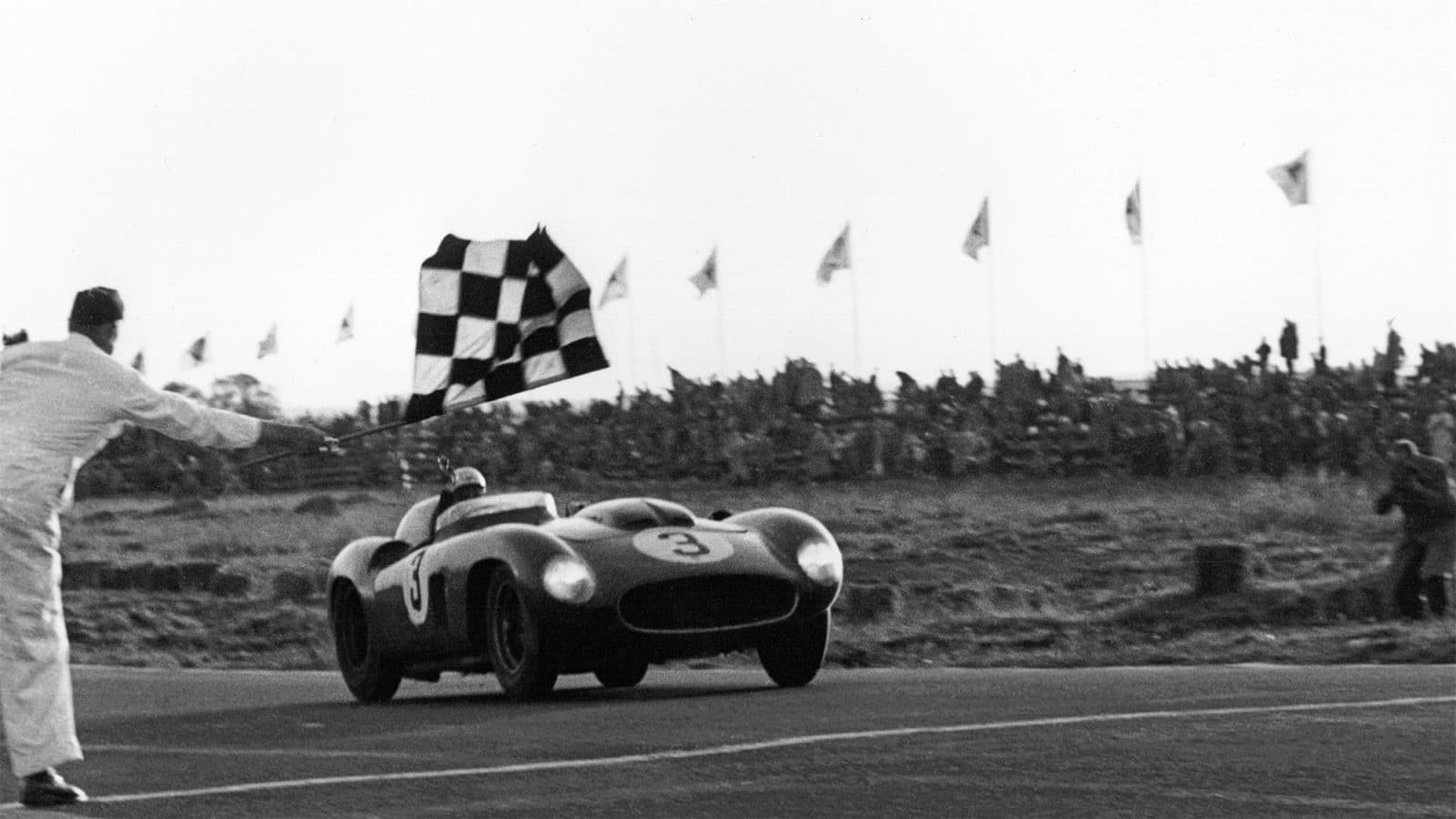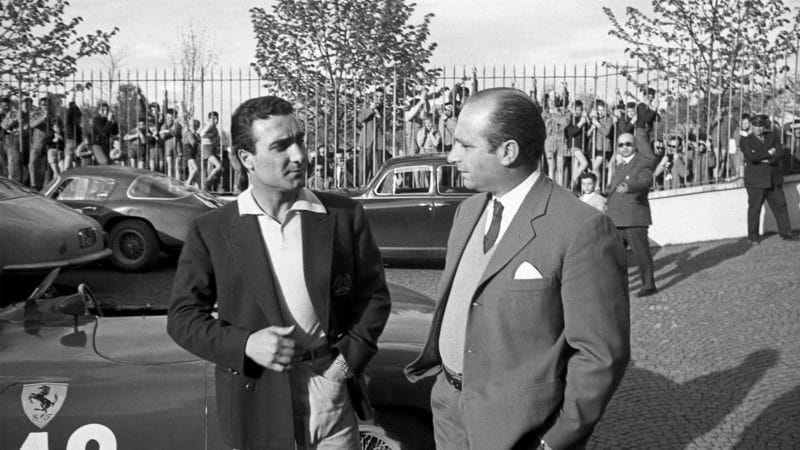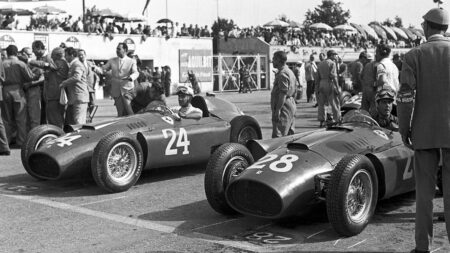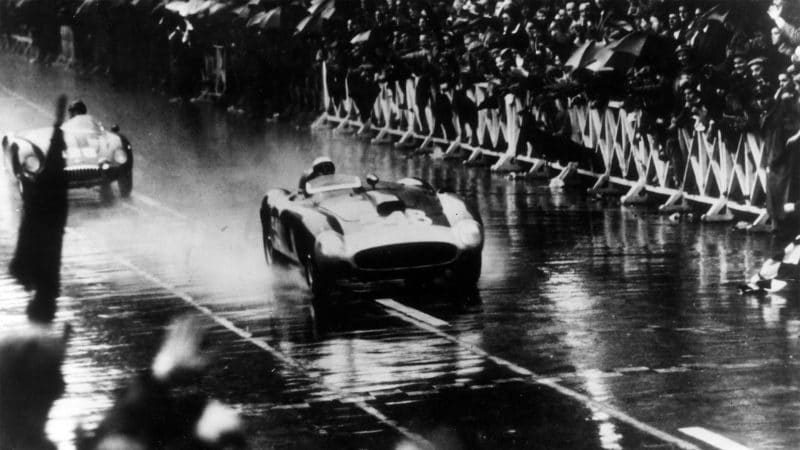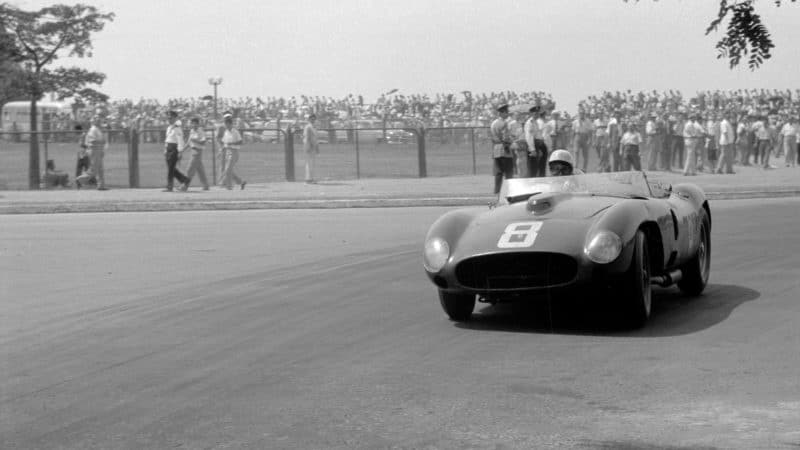After an unsuccessful adventure with a 5-litre V12 in the Sebring race which opened the ’56 season, a new engine labelled 130S arrived in a barchetta that had one specific target – Italy’s greatest event, the Mille Miglia. It appeared on the entry list as 290MM. Some Ferraris were labelled following a particular success, such as the Monza; some in expectation of victory, and such was the 290MM. Justifiably.
Combining elements of previous Ferrari V12s, the new unit was a 3.5-litre dry-sumped 60deg vee with single-cam valvegear, twin plugs and three twin downdraught carbs, adding up to 320 horsepower. There was nothing remarkable about the chassis, though Ferrari, ever resistant on the innovation front, had by now got as far as coil-sprung wishbones at the front and a de Dion holding the rear wheels upright. Disc brakes, of course, would have to wait a bit longer until Jaguar’s lesson was finally absorbed.
That was the Jano angle, but the Lampredi camp had its parallel offering, the 860 Monza, a very similar four-cylinder machine extracting 280bhp from its 3.4 litres and using essentially the same chassis. Centre-bonnet air intakes distinguish the models, the V12 trying both a dainty twin-nostril version and a less elegant square scoop. Two impressively capable machines that seemed to have every chance of matching the mighty Mercedes – except there weren’t any. Having trumped everyone else throughout 1955, the German concern withdrew, leaving Jaguar and Maserati as Ferrari’s more accessible targets in a short season following safety reactions to the Le Mans tragedy. And after all, the victory charts don’t rate the strength of the opposition…
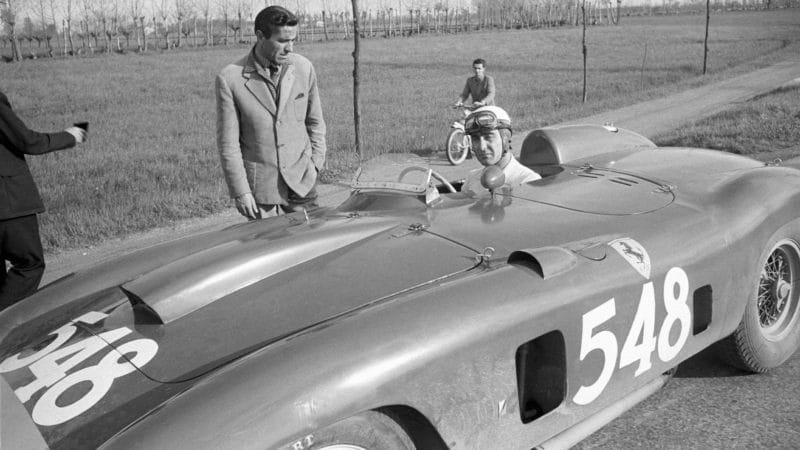
Ferrari’s sports car activities had been disrupted by problems in the grand prix department
Getty Images
Both barrels were readied for the 1956 Mille Miglia, two 290MMs and two 860s, and the line-up was impressive: the departure of Lancia and Mercedes allowed Castellotti and 1955 F1 champion Fangio to join the Maranello squad in the V12s, while Musso and Collins made do with four cylinders. In the afterglow of his record 1955 victory Stirling Moss looked strong if his Maserati 300S held up, but he, with Motor Sport’s DSJ aboard, would slide off the road at Antrodoco. Brake trouble snuffed out a brief Maserati lead for Taruffi, leaving the four Ferraris to debate the win. In filthy weather, Castellotti – Il Bello they called him, handsome and wealthy as he was – gave the 290 its intended MM garland, but almost two drenched hours slower than Moss’s record.
